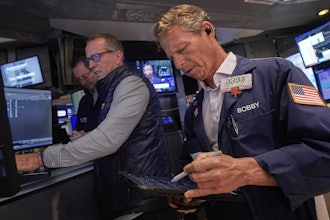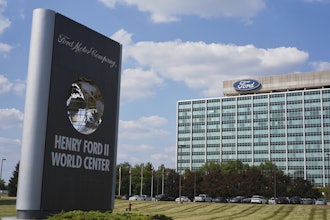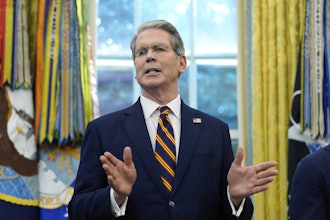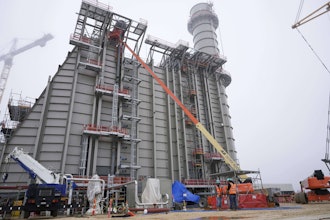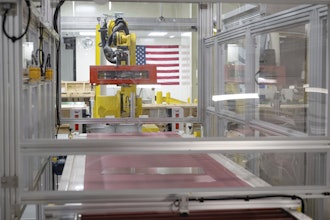
Editor's note: This is sponsored content.
Manufacturers in the Consumer Packaged Goods (CPG) space are navigating an industry in continuous change. Food safety, environmental, and product labeling regulations are becoming increasingly complex. A misstep in any one of these areas could mean a costly fine, product recall, or even a loss of consumer trust. For manufacturers, keeping pace with these regulations is a matter not only of legality but a keystone for success in a highly competitive marketplace. Below are the most daunting regulatory issues facing CPG manufacturers today and practical strategies for keeping them at bay.
The Rising Tide of Regulations
The CPG industry faces an ocean of various regulations that vary by geographical location. Food products in the United States are overseen by the Food and Drug Administration (FDA), while meat, poultry, and some egg products are under the purview of the U.S. Department of Agriculture (USDA). Other CPG categories, including personal care and household goods, are regulated by agencies like the Environmental Protection Agency (EPA) and the Consumer Product Safety Commission (CPSC).
The biggest challenges are often driven by changing regulations. Consumer safety, environmental impact, and transparency are on the agenda for governments worldwide. As laws change, manufacturers must keep pace or risk severe liability exposure. For instance, the U.S. Food Safety Modernization Act brought in revolutionary reforms intended to prevent foodborne illnesses by making manufacturers responsible for controlling the risk factors across their supply chains.
Things are further complicated by international markets, as countries keep their own regulatory framework. The European Union (EU), for example, enforces demanding requirements on all aspects of food production, from safety to environmental sustainability. This creates a patchwork of sometimes conflicting rules that manufacturers must monitor and traverse through carefully.
Labeling Requirements Management
Product labeling is one of the most visible areas of regulatory compliance in the CPG industry. Any mislabeling can lead to fines, product recalls, or even lawsuits.
The FDA code that regulates the U.S. market is strict. Nutritional facts, ingredient lists, and allergens need to be correctly presented. Labels on personal care products must conform to the Federal Food, Drug, and Cosmetic Act, which requires an explicit list of ingredients and safe use cases. Products that include evidence-based claims, like "organic," "non-GMO," and "gluten-free" are even more heavily scrutinized. Earning reputable food certifications can ensure that products with these labels meet all regulatory requirements.
Failing to comply can translate into regulatory action or even product bans. Therefore, manufacturers must implement a strong labeling review process in tandem with regulatory experts and their legal counsel. In addition, labeling management software can leverage automation to help avoid costly mistakes and streamline the labeling process.
Product Safety and Quality Assurance
Safety is arguably the most important aspect of the food and beverage industry. Strict measures are put in place to protect consumers from contamination, foodborne illnesses, and other possible risks.
In the U.S., the Food Safety Modernization Act (FSMA) and the General Food Law of the EU keep food manufacturer standards high and target efforts towards outbreak prevention rather than reaction. Due to this responsibility, food manufacturers must develop sound Hazard Analysis and Critical Control Points plans backed by regular audits and full supply chain traceability.
International markets very often put similar strict standards regarding food safety. For example, they require that food placed on the market should be safe, traceable, and correctly labeled. Non-compliance could result in the recall of products, fines, or even bans from the sale of products within certain regions.
Investments in top-shelf quality control systems will help organizations maintain product safety regulations. These systems involve technology solutions, such as blockchain for traceability or IoT devices to monitor in real-time the conditions of production. It is equally imperative to establish and maintain close relationships with suppliers and regular audits of their processes to ensure safety standards are followed across the value chain.
Staying Ahead of Regulatory Changes
Industry knowledge and awareness are essential in the CPG industry where regulations can occur overnight. Manufacturers that cannot adapt might find themselves with an unpleasant surprise. New regulations concerning sustainability or the transparency of ingredients have wide-ranging effects on product design, production, and marketing. Manufacturers that continuously upgrade their practices can note this in databases like Keychain.com to stand out in a competitive field.
Besides this, manufacturers should have an active regulatory monitoring system by partnering with industry associations, subscribing to databases carrying regulatory information, and/or using law firms specializing in CPG law. Companies are increasingly investing in regulatory compliance software to track the legislative environment in real time and implement process changes automatically.














